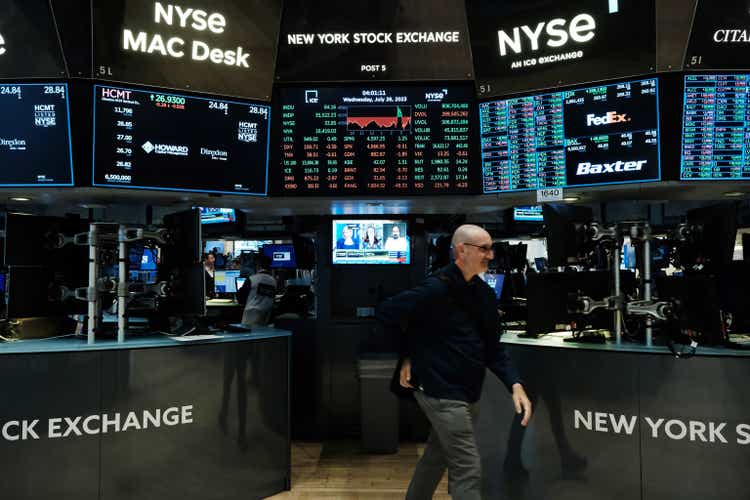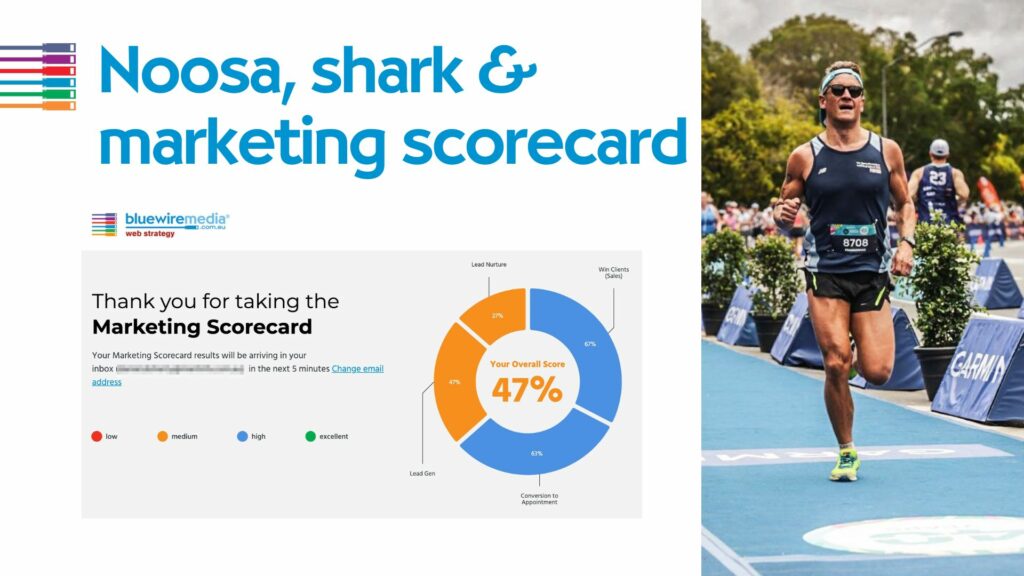
Spencer Platt/Getty Images News
U.S. stocks on Tuesday were mixed, a day ahead of key inflation data that will likely shape future Federal Reserve monetary policy actions.
Apple’s (AAPL) latest launch event was one of the main highlights of the day. The tech giant unveiled the new iPhone 15 and a next generation of Apple Watch operated by finger movements. Shares of the company were largely muted through the event and were last down about 2%.
By late afternoon, the Nasdaq Composite (COMP.IND) had fallen 0.76% to 13,811.61 points. The benchmark S&P 500 (SP500) was 0.35% lower to 4,471.85 points, while the blue-chip Dow (DJI) was higher by 0.18% to 34,725.67 points.
Of the 11 S&P sectors, eight were in negative territory, with Technology slipping more than 1%. Fellow heavyweight sectors Communication Services and Consumer Discretionary rounded out the top three losers.
Energy topped the three gainers, as crude oil (CL1:COM) rose more than 2% and neared the $90 mark. The advance came amid a report in which the International Energy Agency brought forward its projection of peak fossil fuel demand to before 2030.
Treasury yields were largely unchanged. The longer-end 10-year yield (US10Y) was down 2 basis points to 4.27%, while the more rate-sensitive 2-year yield (US2Y) was up 1 basis point to 5.01%.
See live data on how Treasury yields are doing across the curve at the Seeking Alpha bond page.
The economic calendar was light on Tuesday, but things will hit a new gear tomorrow with the latest consumer price index (CPI) report. Consumer inflation has showed encouraging signs recently, but still remains well above the Fed’s 2% target. The reading for August is expected to be mixed, with the headline number forecasted to increase from July but the core number anticipated to ease.
After a blistering rally this year that has seen the benchmark S&P 500 (SP500) add nearly 20% up till July, the gauge has stalled in August and so far in September.
“Markets have come under some pressure over the past month, but the so-far modest declines have done little to correct equities’ rich valuations and excessive optimism,” JPMorgan’s Marko Kolanovic said.
“U.S. earnings are contracting, and consensus expectations for next year appear too optimistic given an aging business cycle with very restrictive monetary policy, rising cost of capital, lapping of very easy fiscal policy, eroding consumer savings and household liquidity, and elevated risk of a recession. Risks of an interest rate shock and monetary tightening are clear: consumer credit, real estate, funding of startups and small businesses, increase of market volatility, and, eventually, impact on employment,” Kolanovic said.
The Fed is widely anticipated to hold rates steady at its monetary policy committee meeting next week. The central bank’s dot plot will also be updated, which will give further clues on future policy actions.
Taking a look at Tuesday’s active movers, shares of Oracle (ORCL) slumped more than 11% and the stock was the top percentage loser on the S&P 500 (SP500). The IT services giant’s latest quarterly results showed a slowdown in cloud revenue.
Conversely, WestRock (WRK) was among the top S&P percentage gainers, after the company agreed to merge with Smurfit Kappa (OTCPK:SMFTF) to form a $20B packaging giant.


